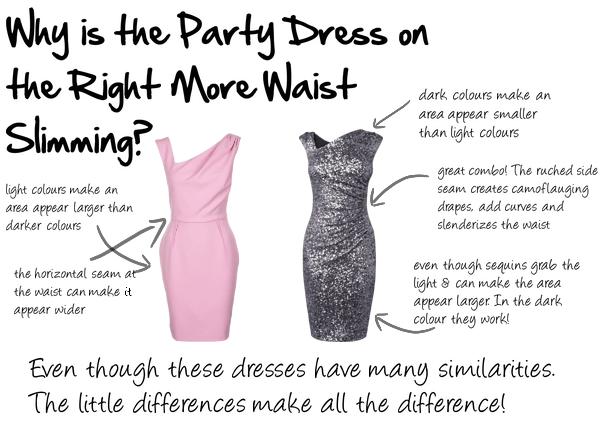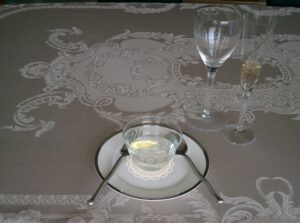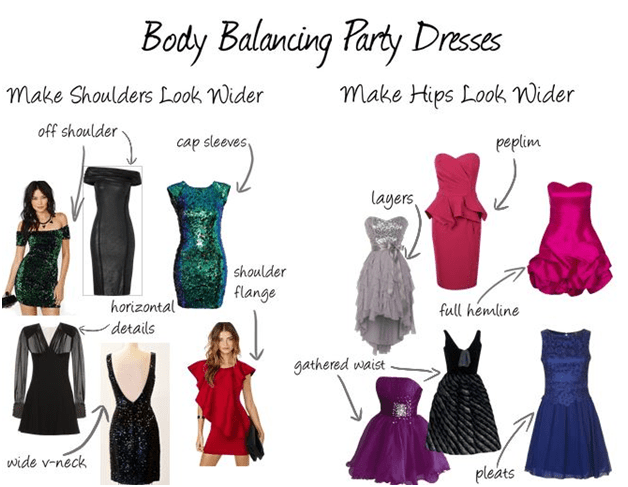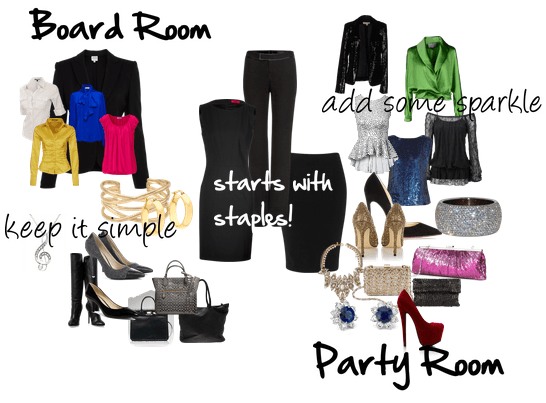Continue reading Use Your Manners at the Canada Day Barbeque
Tag Archives: image consultant
Meet the In-Laws: How to Enhance Your Success
Let’s face it – meeting the in-laws for the first time can be a daunting experience. Whether you are hoping to be welcomed into the family, or your role is to welcome someone into the family, the first gathering can feel like going for a job interview. The knowledge that you will be judged, evaluated, and compared to or potentially competed with by everyone that came before you can leave even the most confident person feeling nervous about that first meeting.Even though I think most would agree that a couple’s happiness should be the most important consideration in a relationship, those of us who have gone through the process of meeting the in-laws or future in-laws would also agree that, as a couple, knowing you have won the family’s acceptance and respect can be essential for the future success of any relationship. Uncertainty of how the in-laws will respond over time, and possibly impact your relationship with your partner or family member can leave anyone feeling insecure.
Having been through this three times – first with parents-in-law; second with a parent of mine entering into a relationship; and most recently with adult children, his and mine; I can say I have seen all sides. I can also honestly say that experience has not made me an expert on winning over family members. However, eliminating additional barriers can increase your odds for success. When meeting your new or future family – prepare ahead of time, be on your best behaviour and dress appropriately.
The success of the gathering weighs heavily on the partner or spouse bringing the families together. If that’s you, take the lead. Help reduce unnerving surprises by providing a heads-up about what to expect. Prepare both sides by disclosing likes, dislikes and personality quirks before the gathering.
• Even though you may be a new family member or want to feel that way, making yourself at home in the home of your host can be perceived as offensive unless invited to do so. Some hosts want their guests to act at home right away and others find guests’ feet on the coffee table, helping ones-self to the fridge, or casually lighting up a cigarette in the house, among other things, enraging. Learn your host’s expectations ahead of time. Then follow their lead.
• If you are one of the in-laws, never bring up the past relationships of your affiliated family member. i.e. “Oh, by the way I saw _____, last week. She said to say, hello. She is such a nice girl.” Fondly bringing up old relationships can bring up new wounds in new relationships. Don’t say or do anything that might hurt or embarrass your new or future family member.
• Don’t leave your child or parent’s date sitting in the living room alone, while you and other family members are in the kitchen. Include your guest by treating everyone equally and with respect. Don’t let your guest feel like an outsider.
• Brush up on your dining skills. Some families dine formally and others are very casual. However, knowing how to navigate the table and what not to do will help you feel more confident and leave a good impression in any situation.
• Find out ahead of time what is considered appropriate dress. Some families dress up for family gatherings and others don’t. Either way leave faded jeans and t-shirts at home. Slacks and a collared shirt, blouse or a lightweight sweater would likely be a better option for casual dress. It will show respect to the host and it will show that you care.
The road to family acknowledgment, acceptance and support can be a long and bumpy one to travel. However, knowing ahead of time what will be appreciated and what will be considered appalling may help ease the tension and make the journey a little smoother.
©Kimberly Law, AICI CIP 2014
3 Reasons to Wear Accessories – By Kimberly Law, AICI CIP
- A change of accessories can instantly change the mood of an outfit. The correct accessory can change your look from casual to dressy; daytime to evening; or serious to fun.
- Adding a new accessory can update an old outfit, giving it a new life, giving your clothing longer wearability over time.
- Accessories can create the illusion of a slimmer, taller, shorter or more balanced body shape. They act as a focal point and when strategically placed they can distract the eye away from any figure challenge.
Accessories are the finishing touch and come in many forms. Some examples of accessories include: shoes, handbags, jewellery, belts, scarves/ neckties, glasses, pocket squares, glasses and hosiery. Grooming such as make-up for women, stylish hair and well-groomed nails, accessorize and finish the look.
Choose your accessories carefully and make any outfit look fabulous.
You may also be interested in:
What to Wear to a Black Tie Affair
How to Choose the Wrong Underwear for the Workplace – By Kimberly Law, AICI CIP
Over the years, many companies have invited me to speak to their employees about the importance of professional attire. And as strange as it may seem, in almost every situation the employer brings up the topic of underwear as a big concern. Behind closed doors they tell me of their horror stories about those embarrassing days when an employee comes into work, with the bra straps showing; the thong panty straps showing; or a bra or panties worn too tight, non-supportive or even worse – obviously non-existent. Appropriate underwear is part of your professional attire. So let’s talk about underwear openly.
Lingerie has a very long history and over the years has been designed for many different functions – from hygiene & modesty to changing the shape of female figure & enhancing sexuality.
However, even though historically, lingerie may have served many purposes, (on the scene and behind the scene) in the board room underwear should never get top billing. At work, the purpose of underwear is to provide structure and comfort to your professional attire. As a foundation piece in a professional setting, it should always stay behind the scene in a supporting role rather than standing out as the main attraction.
You may also be interested in:
How to Dress to Appear More Feminine – By Kimberly Law, AICI CIP
Right or wrong, as human beings we have inherently come to identify the female gender as being softer, more nurturing and more delicate than the male gender. Our human perception of fashion also follows these archetypes.
When you meet someone initially your appearance can be your most powerful communicator. Deviating from those archetypical traits can lead to misinterpretation and the wrong first impression.
Here are some things that you can do to appear more feminine.
Cover the body, but don’t try to conceal the female shape. The female form is generally curvier than the male form. For a more feminine look, garments should emphasize the female shape and should flow over natural curves of the female figure without being clingy. Construction details like darts, princess seams and sheering shape the garment. Choose fabrics that are lighter in weight, refined, soft and drape well.
Lower contrast colour palettes in colours that are light to medium in value, softened or muted and analogous colour schemes increase the appearance of softness.
Details that are smaller or perceived as more delicate such as floral prints, heirloom jewelry, ruffles or lace will automatically appear more feminine.
You may also be interested in:
Investment Dressing for Business: Save Money with Better Quality
Body Balancing Holiday Party Dresses By Kimberly Law, AICI CIP Image Expert
You may also be interested in:
Waist Slimming Party Dresses By Kimberly Law, AICI CIP Image Expert

You may also be interested in:
How to Look Slimmer in Your Warm Colour Palette
Professional Dress to Party Dress – By Kimberly Law, AICI CIP Image Expert
Change your ‘board room’ look, to a ‘party room’ look, by changing your top, jacket, shoes and accessories. Nothing say’s “party” like a little sparkle. And this year we are seeing sparkle on everything!
You may also be interested in:
How to Use a Finger Bowl by Kimberly Law, AICI CIP, Certified Etiquette Expert
 Although disposable finger towels are practical and often used in informal environments to cleanse the hands after eating messy food, in a formal environment you may be presented with a finger bowl as part of a dessert service or alone, even if your hands appear clean.
Although disposable finger towels are practical and often used in informal environments to cleanse the hands after eating messy food, in a formal environment you may be presented with a finger bowl as part of a dessert service or alone, even if your hands appear clean.In a traditional European dining environment the custom is for the fingerbowl is used after the dessert is eaten. If it has been presented to you as part of the dessert service, with both hands move the finger bowl and the doily together with both hands and place them in front of you after you have finished your dessert and your dessert plate has been removed. Dip the fingers of one hand into the water, and then dry them before dipping the fingers of the other hand into the water. After you are finished, place your napkin in loose folds to the left of your place setting.
For more on this topic buy eBook ‘Formal Dining for Informal People’
You may also be interested in:
Cutlery Etiquette How to Make a Great Impression
Dining Traditions vs. Casual Lifestyle
What is a Dessert Service? By Kimberly Law, AICI CIP, Certified Etiquette Expert
A dessert service consists of a dessert plate. On the plate, there will be a finger bowl placed on a doily in the centre of the plate, with a dessert fork to the left and a dessert spoon placed to the right of the finger bowl.
The guest sets the fork on the table to the left of the plate and the spoon to the right of the plate. Then picks up the doily and the fingerbowl, and places them on the table at the upper left of the dessert plate. The server then places the dessert on the plate.
When dessert has been served onto your plate, the spoon is held in the right hand. The fork is held in the left hand. Cut the dessert using the spoon. The dessert is pushed onto the spoon with the fork and eaten with the spoon. This is the traditional way in England and many other European Countries. However, in some European regions, the spoon is used for cutting and pushing the dessert onto the fork. The dessert is then eaten from the fork. Because there are many customs for the use of these dining utensils, it is best to familiarize yourself with regional customs before you arrive.
When in doubt, always follow the lead of your host.
For more on this topic buy the eBook ‘Formal Dining for Informal People’
You may also be interested in:
Dining Traditions vs. Casual Lifestyle
How to Be the Perfect Dinner Party Guest!







